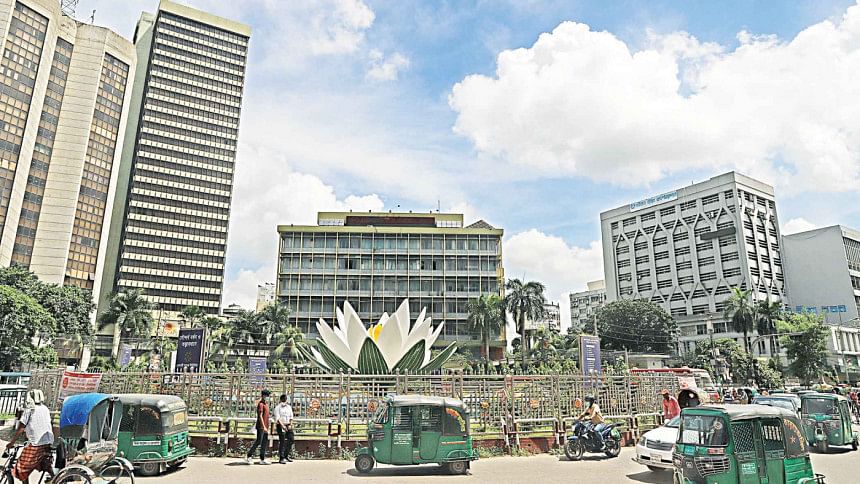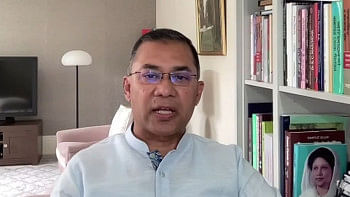Monetary policy: time to be unconventional

Gone are the days of disagreement over aggregate demand management policy based on Keynesian approach or a fixed target on quantity of money supply following the "monetarist approach".
In the wake of unprecedented time of Covid-19 pandemic, with fluid situations of vulnerability and uncertainty, time has come for an unconventional approach to the major public policies namely fiscal and monetary policies.
More so, for Bangladesh, which despite global experience of economic slowdown, has performed satisfactorily and aspires to march forward tackling the present external and internal shocks in economy.
Monetary policy is an important tool to help accelerate economic development of Bangladesh.
Bangladesh Bank in charge of monetary management through its monetary policy statement (MPS) gives stance of the policy dealing with monetary targets, instruments and implementation.
Starting from January 2006, MPS is usually given for six months, January to June and July to December of each year.
Exceptions are, however, made, rather in only few cases, where one year MPS was issued. The last MPS was unveiled in July 2020 for the fiscal year 2020-21.
This January, Bangladesh Bank is in the process of reviewing the monetary policy and adjust or reformulate the policy statement in view of the present situation and future need. First and foremost is to look into what happened to some key variables.
From November 2019 to November 2020, growth of credit to the government sector and government controlled other public enterprises were around 26 per cent and 14 per cent respectively whereas credit growth of the private sector during the same period was around 8 per cent.
This is not a good sign given the fact that the private sector is the driving force for the real growth, employment generation and income creation.
The average inflation in November stood at about 5.6 per cent, which basically is not demand driven, rather supply driven and also due to some effects of international commodity prices.
The share of classified loan is about 9 per cent, wherein the classified loan of the state owned banks, specialised and development financial institutions is quite high.
The Covid-19 recovery financial package consisting of 19 stimuli with a total of Tk 113,117 crore (3.7 per cent of our GDP) was a good step by the government, though in many countries such packages were high above our share of GDP.
But the implementation of the stimuli, which were loan based and bank oriented, is slow and unsatisfactory. Especially, the micro, small and medium enterprises hardly got the benefit, even disbursement to agricultural sector (crop production, fishery, livestock and others) was not prompt and adequate.
The foreign reserve has soared to very high, about $23 billion, remittances were satisfactory and some RMG enterprises fared well, but now the whole RMG is facing challenges. The export products have not shown good performance, mainly because of the glut in international markets. This is the overall scenario of the macroeconomic situation of the country.
Again this backdrop, our monetary policy has to be formulated and implemented with right earnest. Bangladesh, like many other developing countries, is faced with a fluid situation and the consequent uncertainties. Therefore, a country's monetary policy, moving away from conventional 'accommodating' or 'contractionary' policies towards a heterogeneous, unconventional and implementable policy should be taken.
In challenging time, we need policies to face the challenges. We got a 'routine' budget. Monetary policy for FY 2020-21, therefore in tandem, was accommodating, especially in the context of stimulus packages of the government.
The measures by Bangladesh Bank to solve the liquidity crisis of the banks were the right ones. The bank rate was reduced from 5 per cent to 4 per cent, CRR was reduced to 4 per cent, repo rate was reduced from 5.25 per cent to 4.75 per cent, the reverse repo rate from 4.75 per cent to 4 per cent and the SLR was kept reasonably low at 13 per cent.
These along with some refinancing schemes of Bangladesh Bank has resulted in improving the liquidity position of the banks. In fact, given the fixation of deposit rate to 6 per cent and lending rate to 9 per cent, and increased savings rate have resulted in the excess liquidity of the banks, which is not at all healthy situation.
Time has come to reform and revitalise the financial sector (comprising of banks, financial institutions and capital market) and the role of banks in financial intermediation has to be made more proactive to the financially excluded enterprises and introduction of more innovative financial products like hedging, factoring and securitisation.
Let me give some of aspects which Bangladesh Bank should take into account for its future stance and policies for the financial sector.
a) Monetary policy should be for six months not one year, mainly because rapid changes are taking place on domestic and external fronts.
b) Setting inflation as a policy target should not be overemphasised, inflation and growth can be achieved through the coordination of monetary and fiscal policies and other sectoral policies like export policy, industrial policy, investment policy.
c) The policy rates should be revisited and excess liquidity in the banks should be taken care of. In the absence of investment demand and lack of opportunities in expanding businesses, Bangladesh Bank should take steps in liquidity management policies of the banks.
d) Time has come to look into the foreign exchange management of Bangladesh. The rate of exchange of Bangladeshi taka and the operations of foreign exchange market should be analysed and quick action to be taken by Bangladesh Bank. I am not advocating to align fully NEER with REER, but the relationship between the two and the fundamental factors to be taken into account to monitor movements of our NEER. The global situation with US dollar, other hard currencies and the recent move by China to delink its currency Renminbi from US dollar have created an atmosphere which Bangladesh cannot ignore.
e) Finally, Bangladesh bank should look into the impact of Covid-19 on the economy and future challenges, remove injustice and inequality created because of misplaced priorities for focus on growth only, facilitate employment generation and increase access to finance by small businesses, farmers and marginal people.
Having said all the things above, I would like to point out some basic issues, which Bangladesh Bank must consider for formulating its policies and guidelines, including next monetary policy and the subsequent ones, because the following issues cannot be resolved within a short period.
One important thing is the "transmission mechanism" of monetary policy, that is the effect of macro policy on the micro level like households and business enterprises.
There is one middle level through which any macro policy passes, that is the "meso level" which consists of markets, institutions like banks, financial institutions, merchant bankers and brokers for the capital market, regulatory agencies like Bangladesh Bank, Bangladesh Energy Regulatory Commission, Bangladesh Securities and Exchange Commission, promoting agencies like Bangladesh Investment Development Authority and Export Promotion Bureau.
Unless these institutions function properly, no monetary or fiscal policy measures will be properly implemented for effective impact on the desired entities.
What we need is "structural" reforms. There are four major weaknesses in this regard, firstly, as pointed out above, Bangladesh has problems with "institutions" (whatever definition is used).
Secondly, our goods and services markets are exposed to international influences, which have become more acute due to globalisation and then due to Covid-19 pandemic.
Thirdly, volatility arising out of domestic macroeconomic and political imperatives, greater incidence of default risk, corruption and lack of accountability in the banks and financial institutions.
Lastly, poor protection of small and marginal borrowers, lending and deposit operations made under administrative guidance and pressure groups working to create undue influence on the banks and even the central bank.
In conclusion, it is pertinent to point out that though the effects of monetary policy have some lags to work, but it is an important policy to build confidence of the people in the financial sector including the capital market. Bangladesh Bank policy should offer a road map for our rapid, sustainable and inclusive development.
The writer is a former governor of Bangladesh Bank.

 For all latest news, follow The Daily Star's Google News channel.
For all latest news, follow The Daily Star's Google News channel. 



Comments